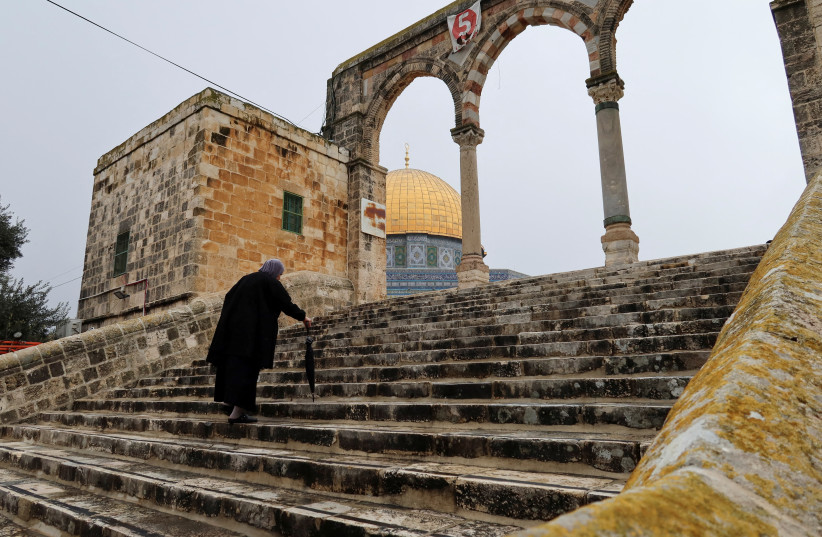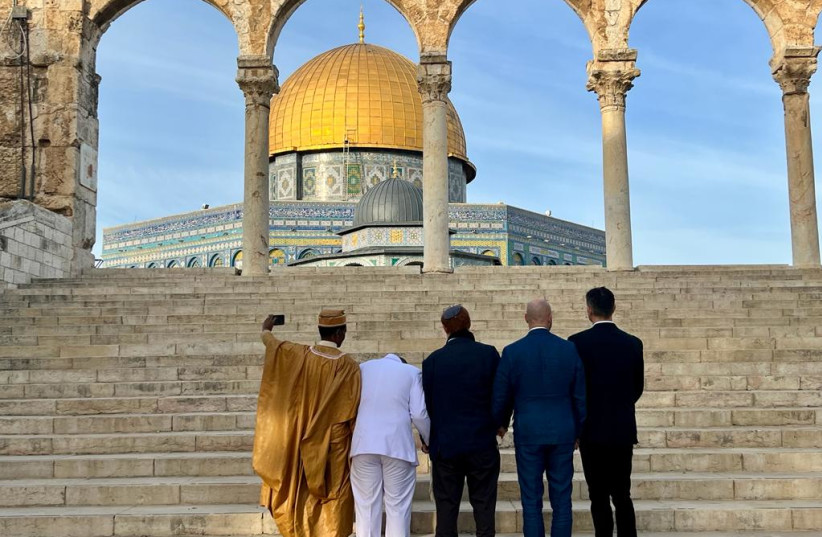The People of Israel are currently experiencing what appears to be a religious war. Immediate and lasting peace will only be achieved when all parties involved work together and create a shared place of worship on the Temple Mount.
The Temple Mount is holy to Jews and Muslims. For Muslims, because it is the location of the al-Aqsa Mosque, or Masjid al-Aqsa built in approximately 685-715 of the Common Era (CE). For Jews, the Temple Mount is the location of the First and Second Temples.
According to Jewish tradition, the First Temple was built by King Solomon circa 990–931 Before Common Era (BCE); secular accounts date the Second Temple as fully completed by 516 BCE.
The First Temple, described in the Book of Kings 1: 5-6, was destroyed by the Babylonians in 587-586 BCE. The period of the Second Temple is divided between the Persian (586-332 BCE), Hellenistic (332-63 BCE); and Roman (63 BCE-324 CE) periods.
Although the Second Temple lacked several holy items that were in the First Temple, including the Ark of the Covenant containing the Tablets of Stone and the Urim and Thummim (divination crystals and precious stones embedded in the breastplate of the Cohen high priest), it also included many of the original gold vessels that had been taken by the Babylonians but restored by Cyrus the Great, the son of Xerxes (identified by many as King Ahasuerus of the Purim story).

During the Hellenistic period, the Second Temple was rededicated after the Maccabean revolt against the Hellenistic Seleucid Empire (story of Hanukkah). In 37 BCE, King Herod enlarged the Temple Mount and rebuilt the Second Temple. It was destroyed in 70 CE by the Romans. Titus’ Arch in Rome bears a deep relief carving of Romans carting off the golden menorah that stood in the Second Temple (rumored to be kept in the Vatican vaults to this day).
There are various beliefs regarding the future of the Temple Mount and al-Aqsa. Some religious extremists are terrified about the future of the Temple Mount. These fears can include assumptions about the future location of the third Jewish Temple, the arrival of the Jewish Messiah, and the return of the people of Israel to their land.
Extremists can experience even the thought of these events as an imminent danger or threat challenging their belief systems. When faced with a perceived ongoing threat or danger, people can experience various emotions such as fear, terror, and anger. Emotions influence behavior and can be overpowering.
Over the years, religious extremists experiencing such emotions have been managing their perceived threat of danger in various ways, including engaging in unhelpful coping behaviors such as physical and psychological aggression – and terrorism.
At times, religious extremists are even able to commit acts of terror acts while screaming “God is great.”
Aggression has only exacerbated the problem for all parties. Many on both sides of the conflict have lost family or been uprooted from their homes, with no clear return date. Aggression and its aftermath have resulted in more hatred, more deaths, more distance, and more distrust between the parties involved.
This unhelpful, problematic coping behavior must be exchanged for healthy coping, which addresses the underlying problem, fear, and terror surrounding the Temple Mount and al-Aqsa.
In order to turn these fears and dangers into trust and safety, joint goals for the area must be formed between the parties who, ultimately, share much natural common ground such as many of their dietary laws, belief in the oneness of God, and a common forefather in Abraham.
The Temple Mount issue could be a bold starting point for peace
PEACE TALKS are not new to the parties, who would be wise to leverage the current talks to create an opportunity for something completely new and bold and decisively address the underlying issues of the Temple Mount. Peace could be brokered by representatives of each religion or subgroup wishing to participate in a groundbreaking initiative – along with national and political leaders.
These representatives would of course have to brainstorm together how to achieve true peace and understanding (for all religions, cultures, and peoples) and then create a place of joint worship on the Temple Mount. This place should be open to all who are interested in free and safe access and the right to worship peacefully together. There is no religious barrier that prevents Jews and Muslims from sharing a place of prayer on the Temple Mount.
Perhaps initially, talks could take place in the presence of an objective mediator or psychologist who would work to create safety in the room, watch interactions, clarify, reflect, pace the progress, and serve as an objective and neutral voice in the room.
Fear must be met with exposure and the experience of reality. The Temple Mount must become a symbol of good for all. It must signal and create a true place of peace, understanding, respect, love, unity, and, most importantly, belonging.
With perceptions based on religious beliefs at the heart of the conflict over the Temple Mount, the response, for years, has been symptom management only, with insufficient attention paid to the religious nature of the root of the problem. This symptom management has included continued fighting, territorial disputes, brainwashing, ad campaigns, threats, espionage, defense systems, etc. These have all been insufficient, perhaps even futile, and have not solved the actual conflict. Over time, more of these tactics have been deemed necessary because the problem has become worse.
This attempt at a solution can be likened to the treatment of a patient who experiences and complains of pain, and yet his doctor fails to diagnose his cancer and prescribes painkillers. Symptom management will momentarily numb the pain, but it will inevitably return. Painkillers may even have deleterious side effects. Meanwhile, the cancer grows and spreads, and the symptoms invariably worsen.
To achieve lasting peace, the root cause must be tackled. In this religious war, the remedy is to agree to guarantee and create eternal freedom for all religions who want to worship freely and safely on the Temple Mount.
Peace partners must commit to and learn how to have open and vulnerable discussions with each other, discussing dreams, limits, fears, and motivations. A plan needs to be put in place for a future of healthy problem-solving, continuous safety, and trust.

THERE ESPECIALLY needs to be a joint plan for societal change. Children and adults alike ought to be taught to embrace values such as love, kindness, honesty, tolerance, acceptance, and respect for humankind. Differences (such as the choice to be secular) are to be expected and even admired and embraced. Teaching and modeling can occur in many places, including schools, homes, and via sermons by clergy.
The disease that the Middle East is suffering from is curable; however, it requires proper diagnosis and fitting intervention. The treatment may not be easy, the diagnosis understandably difficult to hear, but the work will be well worth the effort.
Together, we can erase a likely great source of uncertainty and fear – access and ownership of the Temple Mount – and turn it into a great source of security, certainty, unity and trust.
The writer, who holds a PhD in clinical psychology, focuses on the realm of multicultural mental health. Most of all, though, she is a mother and a member of humankind.
